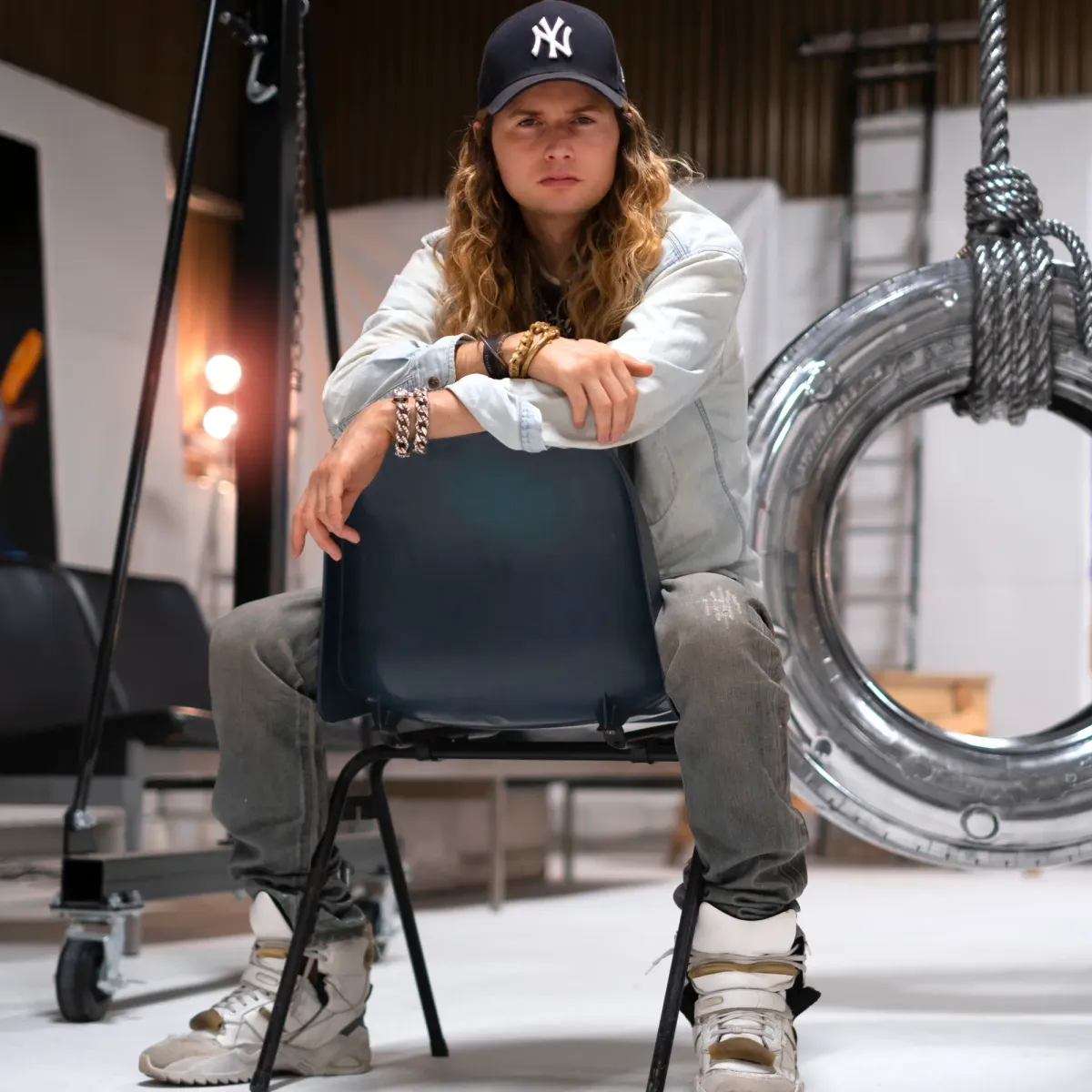Hans Op de Beeck’s Whispered Tales: A Journey into Dreamlike Reflection
Explore Hans Op de Beeck’s Whispered Tales at Templon Gallery New York, an immersive exhibition blending sculptures, watercolors, and animation to reflect on memory, identity, and the human condition.

Hans Op de Beeck: Crafting Dreamscapes at Templon Gallery New York
Belgian artist Hans Op de Beeck is celebrated for his immersive sculptures, installations, and cinematic compositions that invite viewers into meticulously constructed, otherworldly scenes.
Op de Beeck’s works are suspended moments—fragments of life caught between the ordinary and the extraordinary, inviting us to contemplate the fleeting beauty of existence

Born in 1969 in Turnhout, Belgium, Op de Beeck has spent his career exploring the interplay between memory, temporality, and the human condition.
His work spans a wide range of media, from watercolors to life-sized sculptures and animated films, all characterized by a distinctive monochromatic palette that evokes quiet introspection.

Op de Beeck’s latest exhibition, Whispered Tales, at Templon Gallery New York continues his exploration of universal themes, combining moments of stillness with evocative, dreamlike atmospheres.

By merging classical influences with contemporary sensibilities, the artist crafts a unique narrative language that transcends time and space.

A Cabinet of Curiosities Reimagined
The exhibition unfolds as a modern reinterpretation of a cabinet of curiosities, blending fantastical elements with a quiet, melancholic reflection on human existence.
Op de Beeck uses sculptures, watercolors, and animation to create an intimate yet expansive world.

His life-sized sculptures, such as The Horseman and Miriam, present figures caught in suspended moments.
These characters, rendered in a velvety gray monochrome, embody an otherworldly stillness that invites contemplation.

The Horseman, for example, depicts a nomadic traveler accompanied by a small monkey holding a parasol, their journey reflecting both timeless solitude and contemporary themes like migration and displacement.
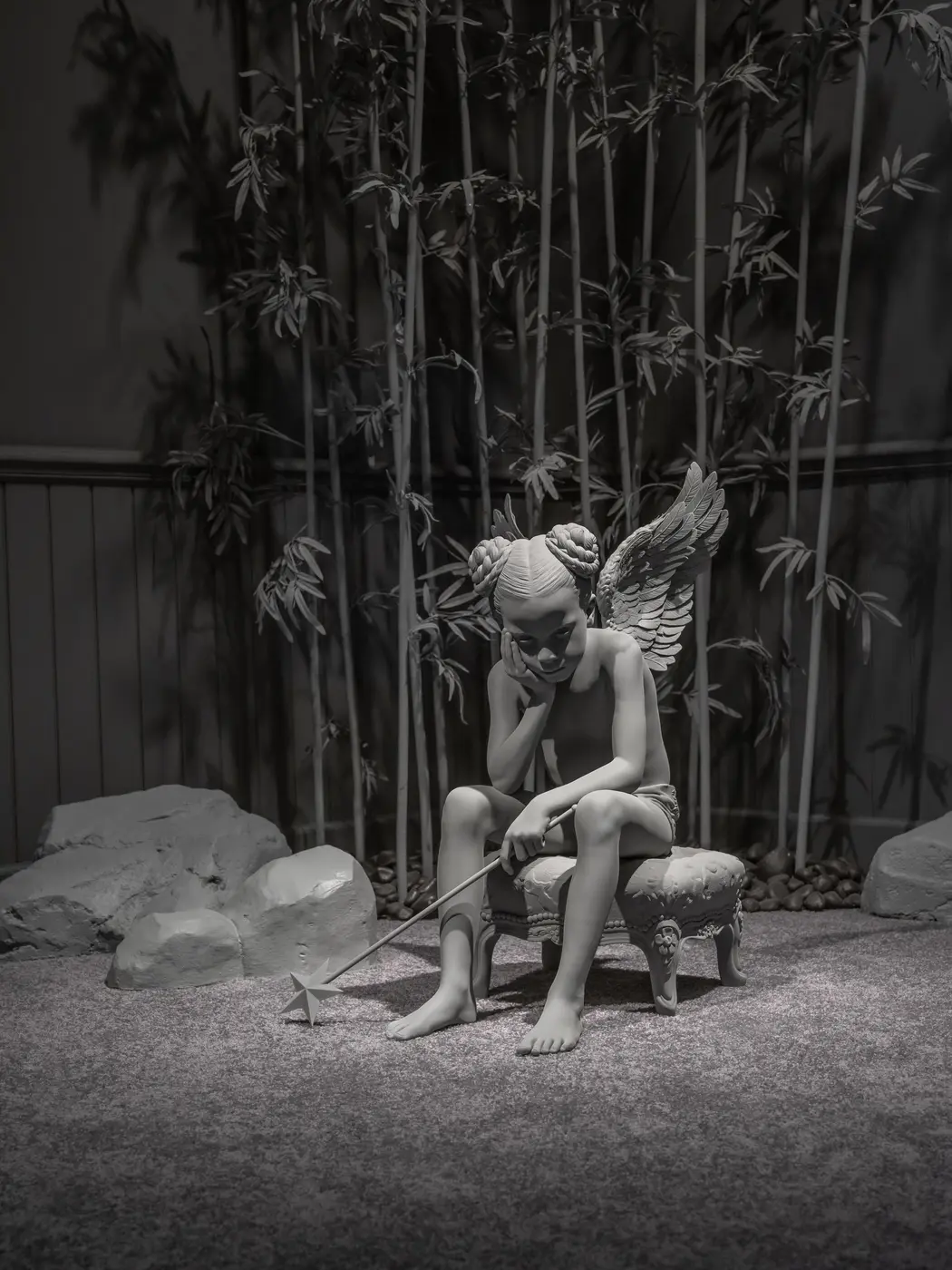
Another striking piece, Zhai-Liza (angel), features a delicate girl with angel wings and a magic wand, her melancholic expression contrasting with the whimsical accessories of her fairytale role.
This juxtaposition of fragility and fantasy exemplifies Op de Beeck’s ability to blur boundaries between the real and the imagined.
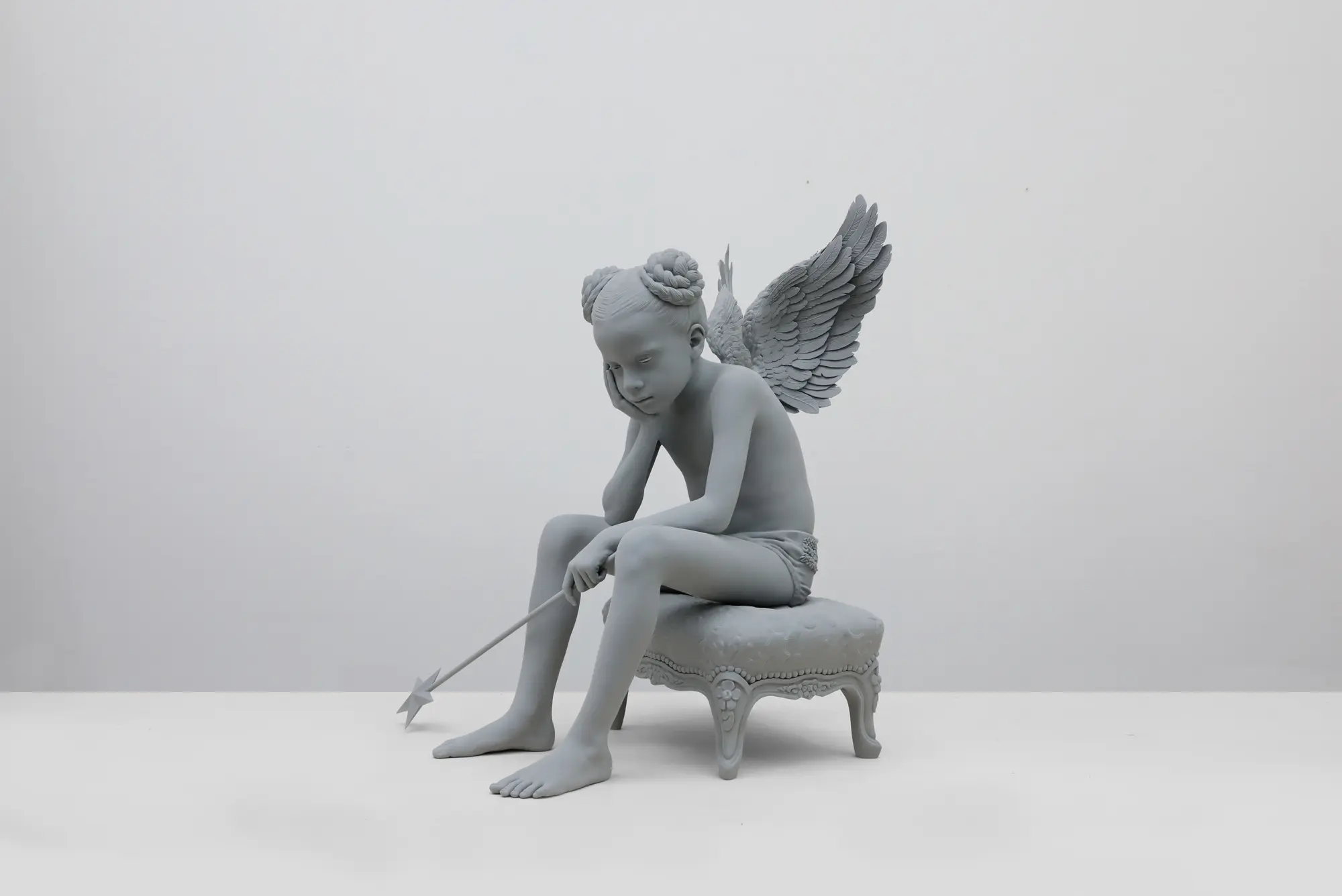
Op de Beeck’s practice is rooted in a deep engagement with the passage of time and the impermanence of human life.
His sculptural works often evoke a sense of nostalgia and loss, yet they are also imbued with moments of quiet beauty.


HANS OP DE BEECK | On the left: Wunderkammer (skull), 2024 216.5×120×41cm—851/4 ×471/4 ×161/4 in | On the right: Wunderkammer (Brian), 2024 Wood, glass, steel, polyamide, coating, mixed media 216.5×120×41cm—851/4 ×471/4 ×161/4 in | Courtesy of the artist and Templon, Paris – Brussels - New York | Photo © Artist's studio
Pieces like Vanitas Table (NYC) draw on historical artistic traditions to reflect contemporary concerns.
By incorporating everyday objects like drink cans and fruit into the classical vanitas genre, Op de Beeck creates compositions that are both playful and profound.

In his animated film Vanishing Point, Op de Beeck explores the intersection of the measurable and the unknown.
Inspired by his monochromatic watercolors, the film captures fleeting moments of serenity, guiding viewers through imagined landscapes and still lifes.
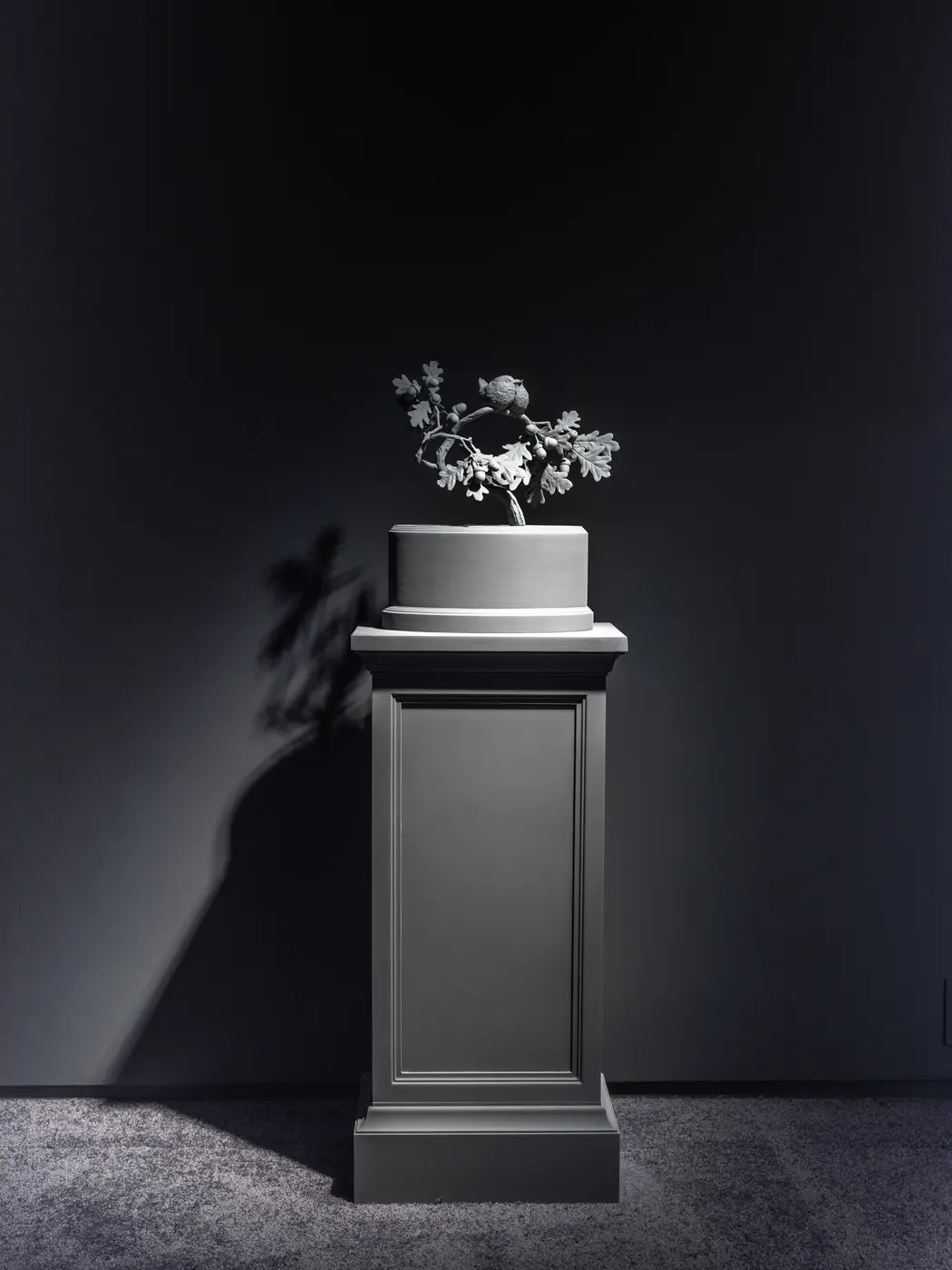
The artist describes these moments as opportunities to “become nobody and nowhere,” slipping into timelessness and self-loss.

Op de Beeck’s work resonates with current artistic trends that challenge hierarchical distinctions between high art and craft.
His seamless integration of materials—ranging from industrial polyester to delicate watercolors—reflects a contemporary embrace of hybridity.
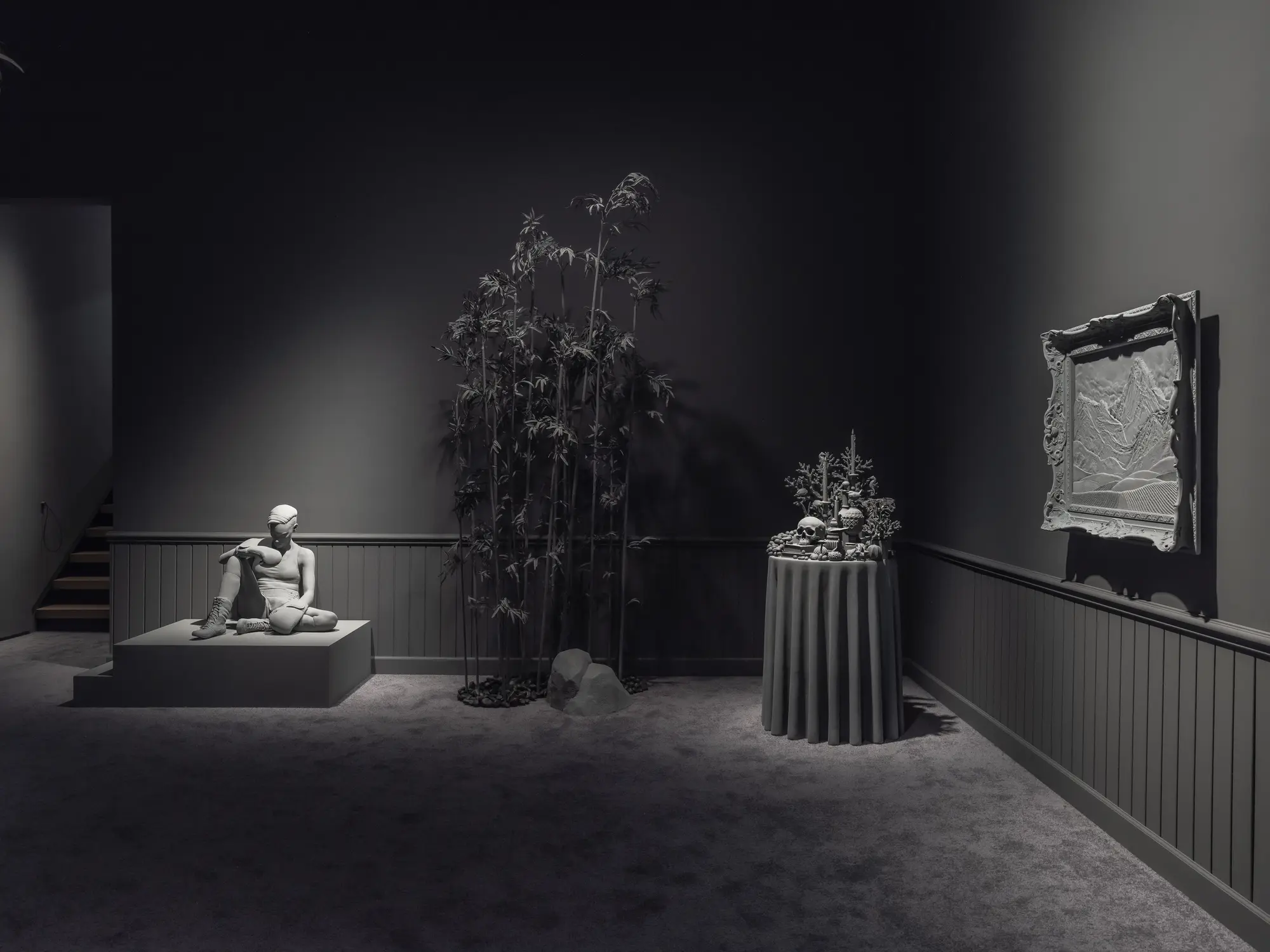
At the same time, his focus on themes of introspection and human vulnerability aligns with broader cultural conversations about mental health, identity, and the need for connection in an increasingly fragmented world.
Moreover, Op de Beeck’s monochromatic aesthetic links him to modern minimalist traditions while also standing apart for its narrative richness.

His creations, far from being austere, evoke layered emotions and invite viewers to engage with them on both an intellectual and visceral level.
What makes Op de Beeck’s work particularly compelling is its ability to bridge personal reflection and universal themes.

Pieces like Danse Macabre (small version), a monochromatic carousel inhabited by skeletons, reflect on mortality with both humor and poignancy.
The work draws on the traditions of Mexico’s Día de los Muertos while also serving as a memento mori—a reminder of life’s ephemerality.

In the scale model My Uncle's Country House, Op de Beeck reimagines a quaint countryside scene filled with exaggerated details like a large romantic bridge and a whimsical swing.
This combination of idyllic and kitsch elements creates a narrative space where personal memory meets collective nostalgia.

A Compelling Invitation to Dream
Hans Op de Beeck’s Whispered Tales is more than an exhibition; it is an immersive experience that encourages visitors to pause, reflect, and dream.
By distilling life’s fleeting moments into sculptural and visual form, the artist offers a poetic meditation on what it means to be human in a transient world.
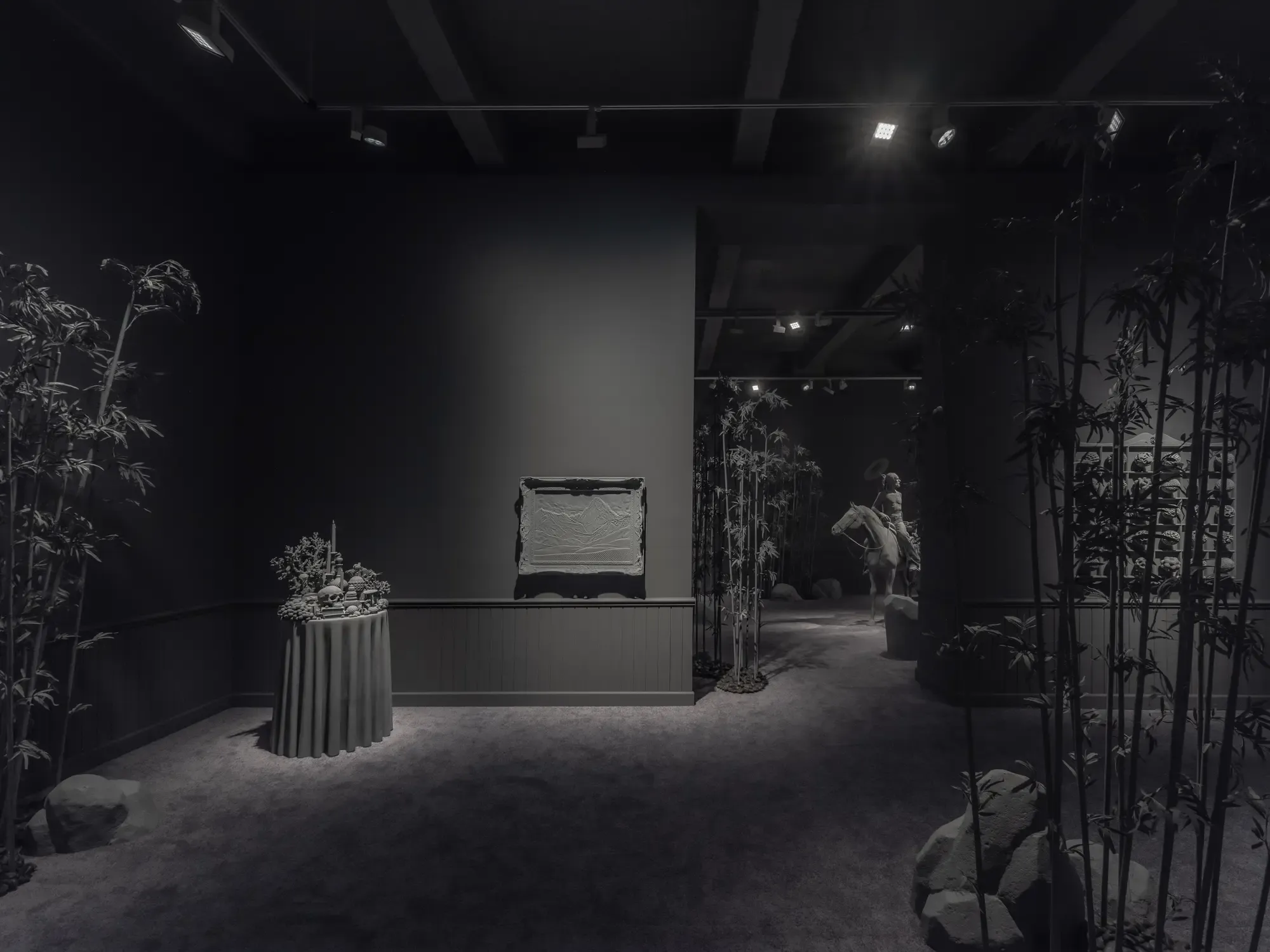
Exhibition Details
- Title: Whispered Tales
- Venue: Templon Gallery New York, 293 Tenth Avenue, New York, NY 10001
- Dates: November 7 – December 21, 2024
- Opening Hours: Tuesday to Saturday, 10 AM – 6 PM
- Instagram Hans Op de Beeck
Read more about the previous Exhibition

